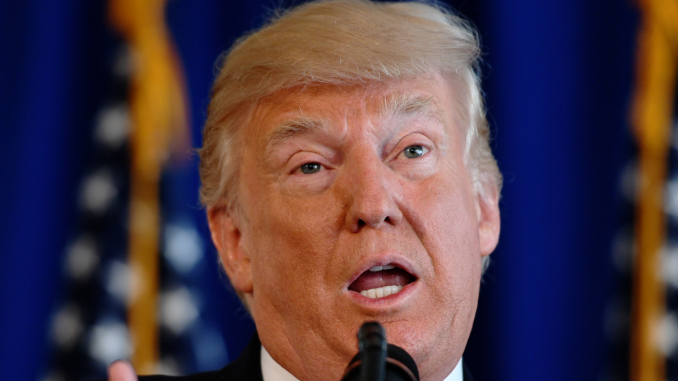
The 2016 election and its aftermath have shown us how politically polarized the United States has become. Is it just our imagination or are the political right and left further apart than they were in the past? A recent analysis by Pew shows us graphically how political leanings in the United States have changed over the period from 1994 during the Clinton Administration to the present.
The Pew Research Center surveyed more than 5000 adults, looking at the gaps on several sets of key political values including the social safety net, race and immigration. Let’s look more closely at four of the key issues:
1.) Social Safety Net – since 1994, the percentage of Democrats and Democratic-leaning independent voters who feel that the government should do more to help needy Americans even if it means that the government has to go further into debt has risen from 58 percent to its current level of 71 percent after falling to a low of 54 percent in 2011. Over the same timeframe, the percentage of Republicans and Republican-leaning voters who believe the same thing regarding America’s social safety net has fallen from 38 percent in 1994 to only 24 percent in 2017. This results in a difference of 47 percentage points between the two groups in 2017, up from only 20 percentage points in 1994.
2.) Racial Discrimination: since 1994, the percentage of Democrats and Democratic-leaning independent voters who feel that racial discrimination ins the main reason why many African-Americans cannot get ahead has risen from 39 percent to its current level of 64 percent after falling to a low of 38 percent in 2010. Over the same timeframe, the percentage of Republicans and Republican-leaning voters who believe the same thing regarding racial discrimination has fallen from 36 percent to its current level of 14 percent after falling to a low of 9 percent in 2010. This results in a difference of 50 percentage points between the two groups in 2017, up from only 13 percentage points in 1994.
3.) Immigration: since 1994, the percentage of Democrats and Democratic-leaning independent voters who feel that immigrants strengthen America because of their hard work and talents has risen from 32 percent to its current level of 84 percent. Over the same timeframe, the percentage of Republicans and Republican-leaning voters who believe the same thing as also risen, but at a much lower rate, from 30 to 42 percent. This results in a difference of 42 percentage points between the two groups in 2017, up from only 2 percentage points in 1994.
4.) Acceptance of Homosexuality: since 1994, the percentage of Democrats and Democratic-leaning independent voters who accept homosexuality has risen from 54 percent to its current level of 83 percent. Over the same timeframe, the percentage of Republicans and Republican-leaning voters who accept homosexuality has risen, but at a much lower rate, from 38 percent to 54 percent. This results in a difference of 29 percentage points between the two groups in 2017, up from 16 percent in 1994.
When looking at all ten measures that the Pew Research Center uses to track the gap in political partisanship, the average partisan gap for these issues has risen from 15 percentage points in 1994 to 36 percentage points in 2017.
Let’s look at a graphical representation of the growing political partisanship in America over the two and a half decades prior to 2017 as supplied by Pew. Here is a graphic showing the responses of the median Democrat and median Republican voters along with the spectrum in between for 1994:
Here is the same graphical representation showing the growing split between the two political opponents in 2011:
Here is the same graphical representation showing an even greater split between the two political opponents in 2015:
Lastly, here is the same graphical representation showing how the United States is experiencing its greatest political divide in the past two and a half decades:
Rather than looking at America as a whole, here is the same graphical representation showing the split between the left and the right for politically engaged Americans:
It’s quite clear that what we sense from the mainstream and other media about the growth in political polarization is not a figment of our collective imaginations. I would suspect that, in our lifetimes, the United States has rarely been more divided on key issues that will drive the America of the future. Unless the unforeseen happens, the fractious Clinton vs. Trump election of 2016 would appear to be the “new normal” when it comes to American political theatre.
Click HERE to view more.
You can publish this article on your website as long as you provide a link back to this page.

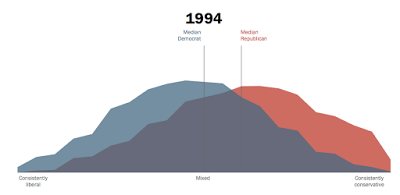
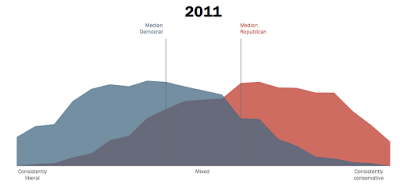
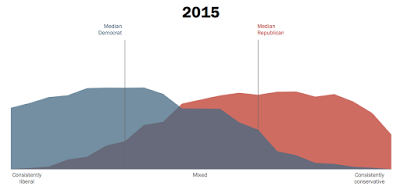
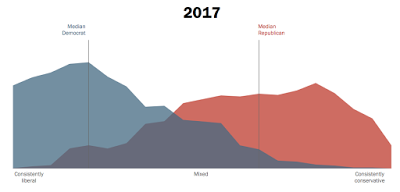
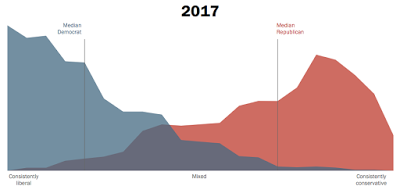
Be the first to comment